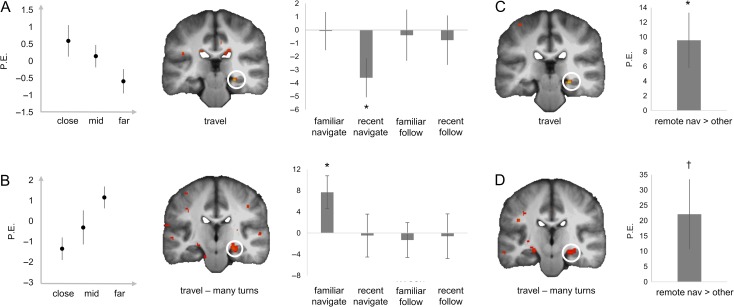Figure 2.
The hippocampus is involved in processing path distance in novel environments as well as familiar environments when the route is complex. (A) During Travel in recent environments, there was a significant negative correlation with path distance, such that there was higher BOLD activity in the hippocampus when participants were closer to the goal location. (B) During Travel in familiar environments, there was a significant positive correlation with path distance, such that there was higher BOLD activity in the hippocampus when participants were further away from the goal location, but only when the route encompassed many turns (>=3). In each plot, from left to right: parameter estimates (PE) extracted from a categorical model (binned by distance), the BOLD activity for the relevant condition (displayed at P < 0.005, min. 5 contiguous voxels), and the PE from the peak voxel in the ROI for each condition, for illustrative purposes only (note the “*” refers to SVC of the voxels in the SPM; error bars represent s.e.m.). All effects survive small-volume correction, including when ED (Euclidian distance) is added to the models. (C, D) Show the data when the GLM included weighted regressors for the effects seen in A/B, respectively. For example, in C, the contrast was 1 −3 1 1, testing for an overall effect of correlation with path distance during Travel, for the recent navigation condition compared with all other conditions. *P < 0.05 SVC, †P < 0.1 small-volume correction (SVC).

